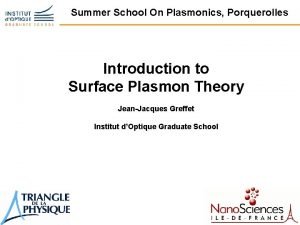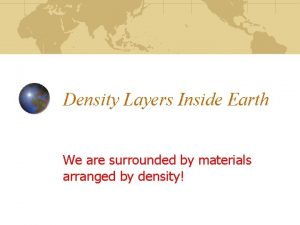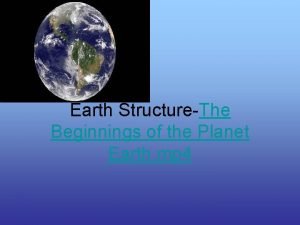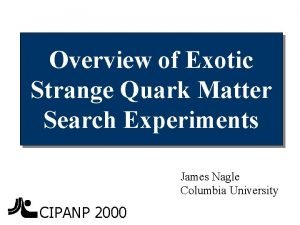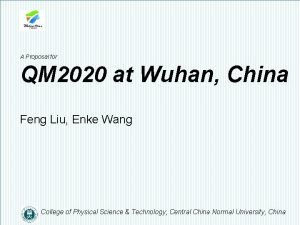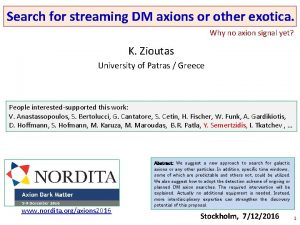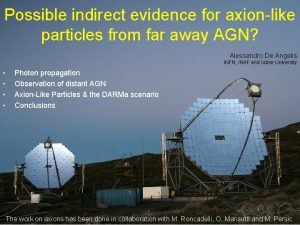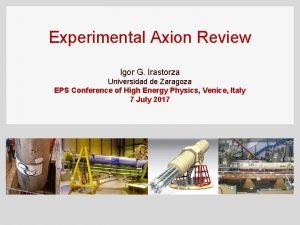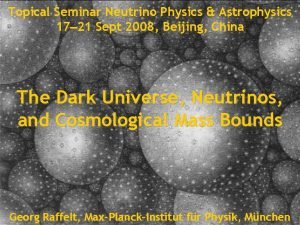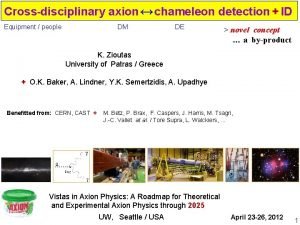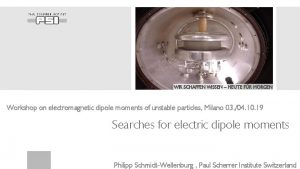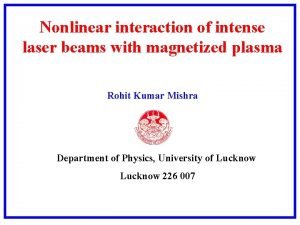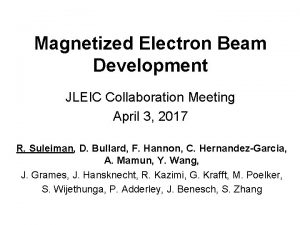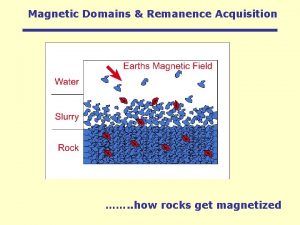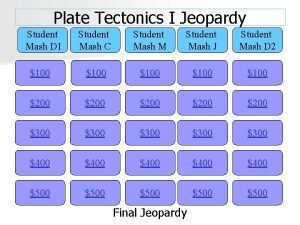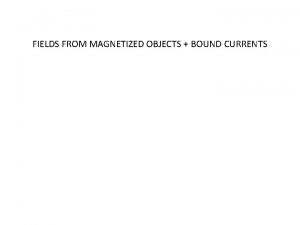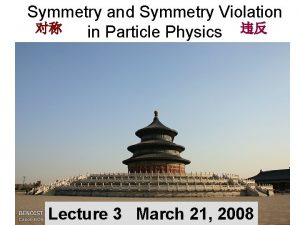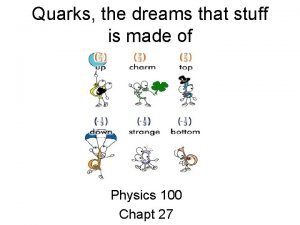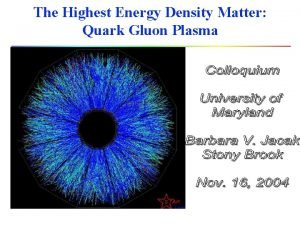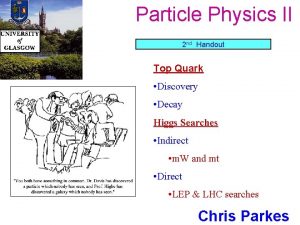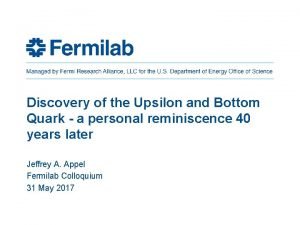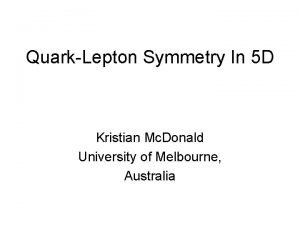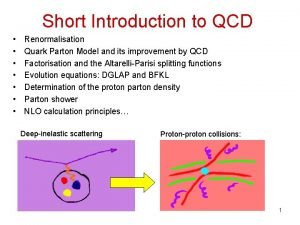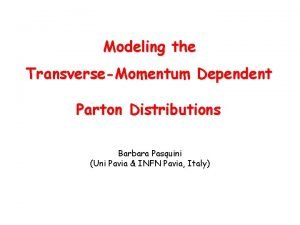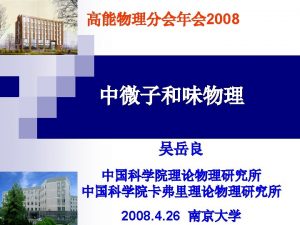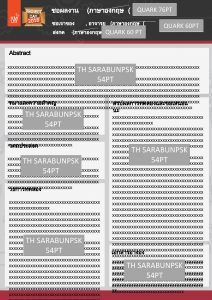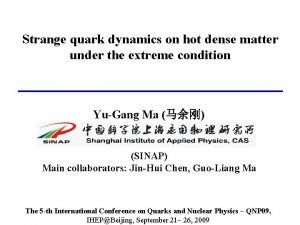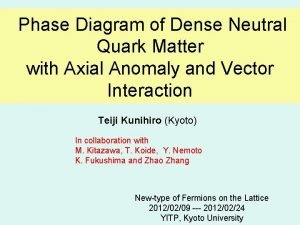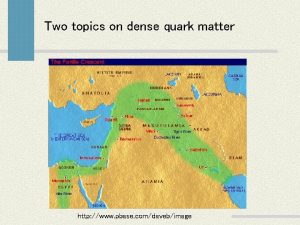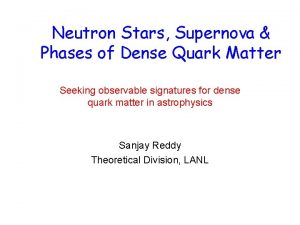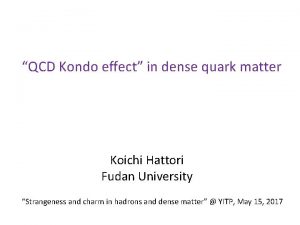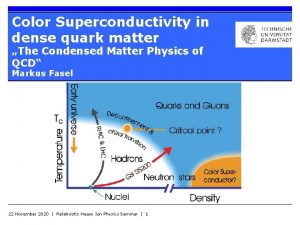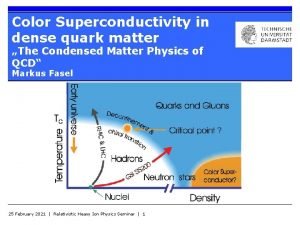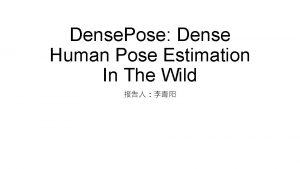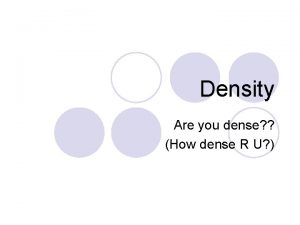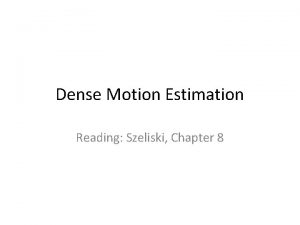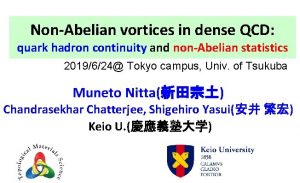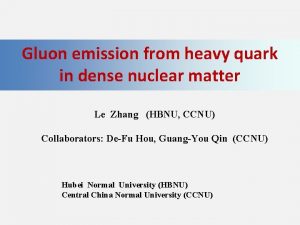Axion Polariton in Magnetized Dense Quark Matter Efrain





























- Slides: 29

Axion Polariton in Magnetized Dense Quark Matter Efrain J. Ferrer XXXII Int. Workshop on High-Energy Physics “Hot Problems of Strong Interactions” October 9, 2020 1

Outline 1. The MDCDW Phase 2. Axion Electrodynamics & Anomalous Quantities 3. Photon-Phonon Interaction & Axion Polariton 4. Primakoff Effect & NS Mass 2

QCD Phase Diagram FAIR NICA

Neutron Stars Diameter: Mass: Temperature: Magnetic fields: pulsar’s surface: B~ 1012– 1013 G magnetar’s surface: B~ 1014– 1015 G

Why Inhomogeneous phases at intermediate densities? 5

Pairing at Intermediate Densities Chiral Condensate Cooper Pairing It pairs particle and antiparticle with opposite momentum (homogeneous condensate) Main channel pairs quarks of different flavors with opposite momenta. Favored at very high densities. Not favored with increasing density Suffers from Fermi surface mismatch for different flavors leading to chromomagnetic instabilities. 6

Density Wave Pairing 7

Basics of the MDCDW Phase 8

Magnetic Dual Chiral Density Wave Model It favors the formation of an inhomogeneous chiral condensate Mean-field Lagrangian Complex mass term Frolov, et al PRD 82, ’ 10 Tatsumi et al PLB 743, ’ 15 9

Chiral Transformation & Asymmetric Spectrum Performing the chiral local transformation LLL mode is Asymmetric 10

Energy Spectrum of the MDCDW Phase Zero LL Higher LL’s A. J. Niemi, Nucl. Phys. B 251(1985) 155; A. J. Niemi and G. W. Semenoff, Phys. Reports 135(1986) 99.

Axion Term EJF & Incera, PLB’ 2017; NPB’ 2018 Key observation: the fermion measure is not invariant under UA The effective MF Lagrangian acquires an axion term: Integrating out the fermions, we find the electromagnetic effective action in the MDCDW model 12

Nontrivial Topology of the MDCDW Phase Topology emerges due to the LLL spectral asymmetry & to the axion term. Anomalous baryon number density The anomaly makes the MDCDW solution energetically favored over the homogeneous condensate Feng/EJF/Portillo PRD 101 (2020) 056012 13

QED in MDCDW is Axion QED Anomalous charge Anomalous Hall conductivity Dissipationless Hall current ⊥ to both B and E EJF & Incera, Phys. Lett. B 769 (2017) 208; Nucl. Phys. B 931 (2018) 192 14

Magnetoelectricity Anomalous magnetization Anomalous polarization 15

MDCDW Symmetry-Breaking Pattern Explicit Symmetry Breaking by the Magnetic field MDCDW Single-Modulated Density Wave Ansatz Spontaneous Symmetry Breaking by the Inhomogeneous Condensate 16

GL Expansion Low Energy GL Expansion of the MDCDW Free Energy EJF & Incera, PRD‘ 2020 MDCDW ansatz The b coefficients are a consequence of the asymmetry of the LLL spectrum 17

GL Expansion Low Energy GL Expansion of the MDCDW Free Energy Ferrer & VI, PRD‘ 2020 MDCDW ansatz The b coefficients are a consequence of the asymmetry of the LLL spectrum 18

Spontaneous Breaking of Chiral & Translational Symmetries with m and q solutions of the stationary equations: Symmetry is reduced to UV(1)x. SO(2)x. R 2 Fluctuations of the condensate come from two Goldstone Bosons: A pion and a phonon. 19

Phonon Low Energy Theory Chiral and translation transformations are locked Low-Energy Theory: The low-energy theory is described by a generalized GL expansion of thermodynamic potential in powers of the order parameter and its derivatives. 20

Here we assume that a linearly polarized electromagnetic wave with electric field parallel to the background magnetic field B 0 propagates in the MDCDW medium 21

Linearized Field Equations For applications to Neutron Stars, we consider that the medium is neutral. So, we assume that there exist a background of electrons with electric charge J 0 that ensures overall neutrality. Moreover, in the presence of a static and uniform background magnetic field, the coupling between the phonon and the photon is linear. 22

Eigenmodes Energy Spectrum Axion-Polariton Mass 23

Stability against the Fluctuations EJF & Incera, PRD‘ 2020 Finite! Thanks to B there are no soft transverse modes, hence no Landau-Peierls instability. The MDCDW phase is stable against thermal fluctuations. In contrast at B=0 Infrared divergent. Any finite T no matter how small destroy the long-range order 24

Primakoff Effect as a Mechanism to Increase the Star Mass H. Primakoff, Phys. Rev. 81 (1951) 899; EJF & Incera, ar. Xiv: 2010. 02314 [hep-ph] B 25

Missing Pulsar Problem in Galactic Center & Axion Polaritons EJF & Incera, ar. Xiv: 2010. 02314 [hep-ph] Chandrasekhar limit We find that Each GRB energy output: Photons’ energy range: 0. 1 – 1 Me. V Photons produced in each event: 26

Mass-Radius Relationship Bc≈1018 G Carignano, EJF, Incera, Paulucci, PRD 2015

Summary: • Due to an anomalous effect, the electromagnetism is modified in the MDCDW phase of quark matter at intermediate densities giving rise to a rotated photon and an axion polariton • The anomalous two-photon/phonom interaction present in the MDCDW phase, produces a new mechanism to increase the NS mass. Outlook: • Needed more Measurable NS observables that can discriminate between intermediate density candidates: MDCDW, Quarkyonic, CS Phases. 28

Nontrivial Topology of the MDCDW Phase Topology emerges due to the LLL spectral asymmetry Anomalous baryon number density The anomaly makes the MDCDW solution energetically favored over the homogeneous condensate Frolov, et al PRD 82, ’ 10 29
 Plasmon polariton
Plasmon polariton Efrain balak
Efrain balak Earth's layers most dense to least dense
Earth's layers most dense to least dense Layers of earth from most dense to least dense
Layers of earth from most dense to least dense Earth's layers most dense to least dense
Earth's layers most dense to least dense Quarks
Quarks Quark matter 2022
Quark matter 2022 Axion
Axion Axion particle
Axion particle Axion
Axion ;,dk jhd'v
;,dk jhd'v Axion
Axion Axion particle
Axion particle Magnetized
Magnetized Magnetized
Magnetized Magnetized
Magnetized The cross section below depicts magnetized oceanic crust
The cross section below depicts magnetized oceanic crust Magnetized
Magnetized Quark gluon plasma
Quark gluon plasma Particle wordle
Particle wordle A charm quark has a charge of approximately
A charm quark has a charge of approximately Quark types
Quark types Quark gluon
Quark gluon Top quark decay
Top quark decay Quark names
Quark names Quark lepton symmetry
Quark lepton symmetry Quark parton model
Quark parton model Quark names
Quark names Zamjena za quark sir
Zamjena za quark sir Quark model
Quark model
